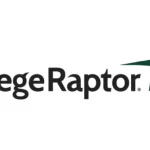One of the greatest aspects of my role as SVP of Product Management is attending events with members of our higher education community. The discussions are always riveting, and after every event, I leave with a broadened perspective and even more excitement for the new and innovative ways we can enhance the student experience in the future.
Recently, Ocelot sponsored a dinner discussion at the 2024 ACE Presidents and Chancellors Summit titled “Higher Education and the Future of AI.” The event was attended by presidents and chancellors across higher education institutions of all sizes, as well as my colleagues Ocelot CEO Anthony Rotoli and VP of Client Success Daria Averbach, and I believe it’s safe to say that we all walked away feeling like the insights, experiences, and predictions exchanged were worth sharing on a larger scale.
Though one post isn’t enough to recap everything, for this piece, I want to focus on a common thread I noticed across our conversation: There is a very clear distinction between how higher education as a whole has been thinking of artificial intelligence (we’ll refer to this as the “traditional thinking”) and how innovative leaders across higher education are planning to leverage AI to meet their goals. Let’s dive in!
Traditional Thinking Around Higher Education & AI
Though artificial intelligence has been a part of the global conversation for quite some time, it took center stage in higher education with the popularization of ChatGPT — and was met with understandable concern. The most obvious of these concerns are around academic integrity; would students use generative AI to “cheat the system” and take a shortcut with their studies and essays? This perspective was definitely heightened by the skeptical media narrative around AI and higher education (just see this article in the Atlantic for an example).
Fortunately, the fears surrounding AI are clearly outweighed by the benefits. Many higher education professionals have started considering AI’s applications in student programming.
However, even this application still does not maximize AI’s potential in our industry. What my colleagues and I clearly heard at the event is that higher education innovators are seeing AI as an opportunity to improve administrative efficiency and impact student experience to meet application, enrollment, retention, and engagement goals.
3 Ways Higher Education Leaders are Looking to Apply AI On Campus
1: To Advance Academic and Student Support Systems
AI has the power to revolutionize academic and student support systems, offering a range of benefits that can enhance the overall student experience and support the efforts of staff members. Imagine a scenario where students can receive instant answers to their questions any time of the day or night. AI knowledge bases automate responses to FAQs, helping students navigate the complexities of course registration, financial aid, and academic advising even after hours.
At the same time, because AI-powered solutions already take care of after-hours inquiries, staff inboxes are significantly less burdened. By streamlining these processes, staff saves time, and students receive answers faster and experience a smoother journey from enrollment to graduation.
Take, for example, Empire State University in New York. Empire State integrated Ocelot’s AI Communications Platform into its student support services. The institution saw a significant increase in student engagement, with Ocelot increasing virtual self-service by 234%. Not only did this improve efficiency by reducing wait times for students seeking assistance, but it also saved $127,400 and 5,460 employee hours, allowing staff members to focus their energy and expertise on more complex and personalized student interactions. All of these efforts combined ultimately powered a fall-to-fall student retention increase of 3.7%
2: To Bolster Equity Initiatives
AI-powered solutions also have the potential to support equity initiatives in higher education, ensuring that all students have equal access to resources and support. By leveraging the power of AI, institutions can provide personalized assistance and guidance to students from diverse backgrounds, helping to bridge gaps and promote inclusivity.
For instance, imagine a first-generation college student who may feel overwhelmed navigating the complexities of the financial aid system. AI-powered solutions can provide step-by-step guidance and answer specific questions over any of a student’s preferred communications channels, empowering students to make informed decisions and access the financial support they need to succeed.
Moreover, cutting-edge AI technology can assist institutions in identifying and addressing potential barriers that may disproportionately affect marginalized groups. By analyzing data and patterns, AI solutions can help institutions flag and mitigate systemic biases within their processes or support systems.
This proactive approach ensures that interventions are tailored to the specific needs of each student and also helps institutions create an environment that promotes equity and fosters student success. By working hand in hand with AI technologies, higher education institutions can advance their equity initiatives and strive to provide an inclusive and supportive environment for all students.
3: To Support At-Risk Students
AI-powered solutions can ensure that at-risk students receive the assistance they need to overcome challenges and succeed academically. By leveraging AI technology, institutions can analyze data and identify risk indicators, empowering the right resources to intervene early and provide targeted support.
For example, AI-powered solutions can flag students who have missed multiple assignments or are exhibiting signs of disengagement. With this information, staff members can contact these students, offering resources and personalized guidance to help them navigate their academic journey.
This proactive approach has been shown to increase student retention. Take Long Beach City College as an example. This southern California community college identified six thousand students who could not re-enroll for classes due to an unpaid tuition hold on their account. The school realized that these students were likely unaware of a fund available to help students pay off their tuition. They leveraged Ocelot’s AI Communications platform to send texts to inform that segment of students about their options, and the result was incredible:
- 50% of those students re-enrolled that semester
- The school recovered millions in unpaid tuition and possible student churn
The Wrap Up
It’s clear that the potential for AI in higher education is far reaching indeed — it can help colleges and universities reach retention goals, engage students proactively, and support those students who need it most. All it takes for us to realize that potential is for higher education leaders to pave the path and actively innovate, leveraging AI to craft seamless and fulfilling student experiences.
Want to learn more about how you can lead the charge for AI-powered student experiences on your campus? Our experts would be happy to talk to you! Click here to learn more.















